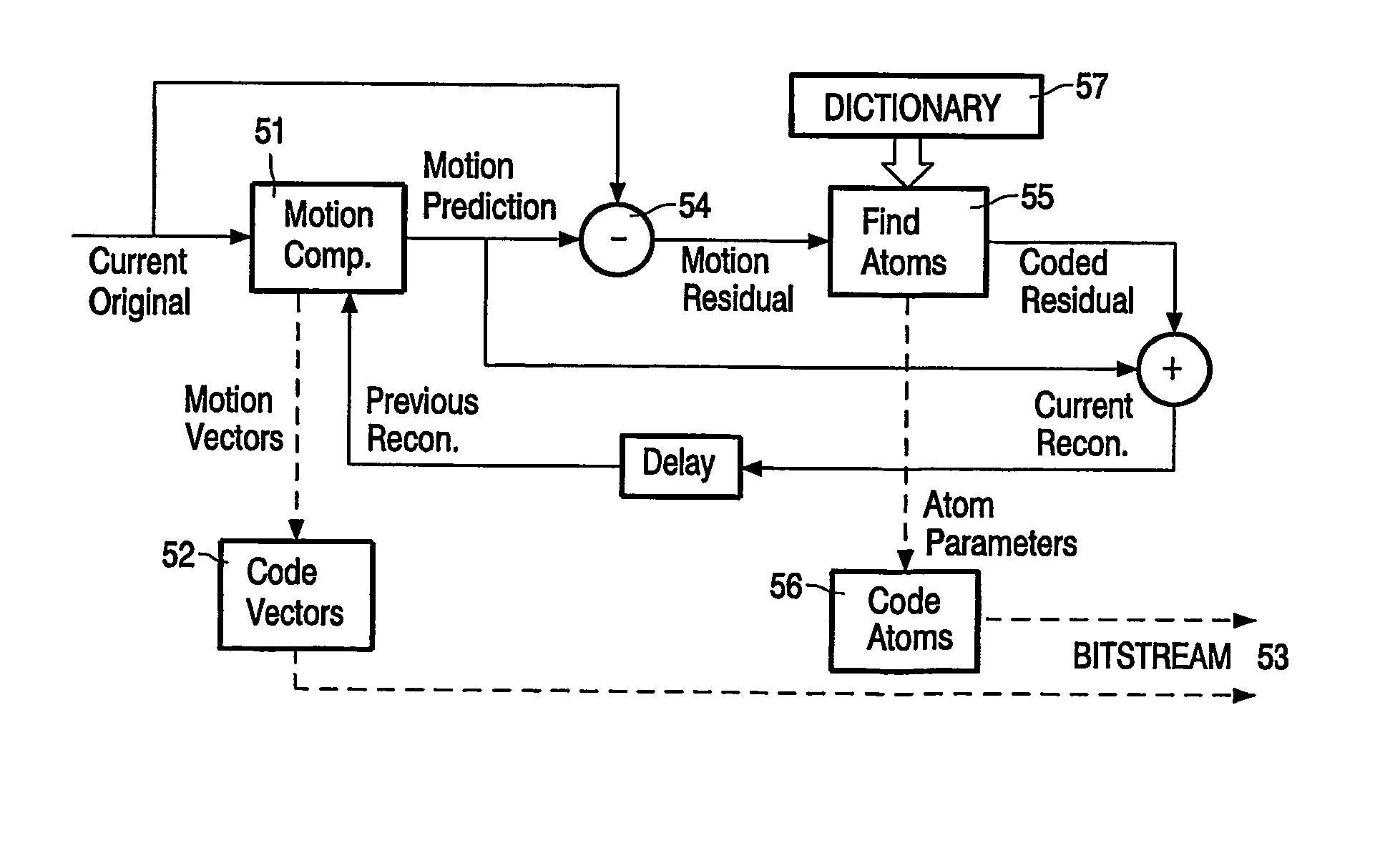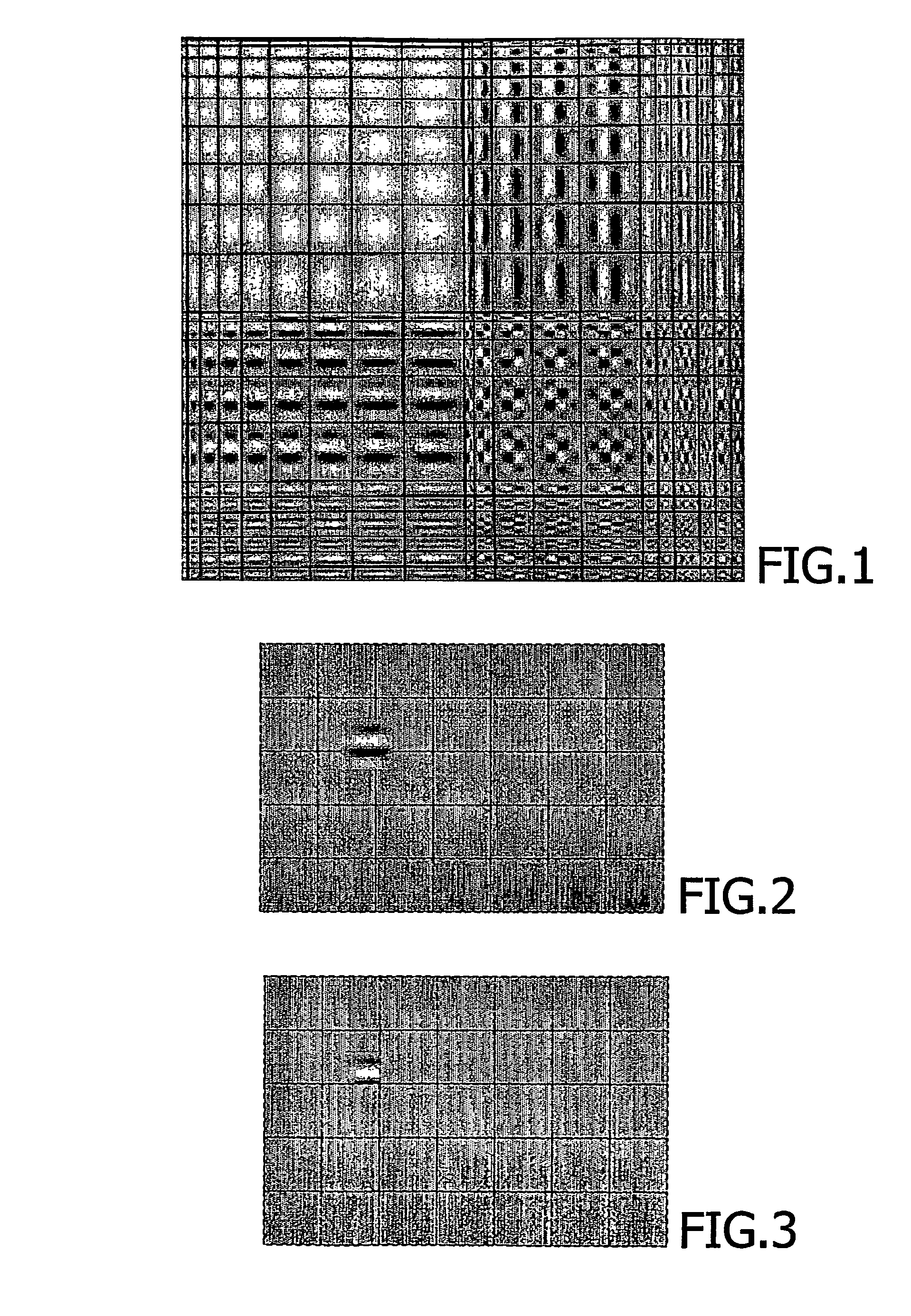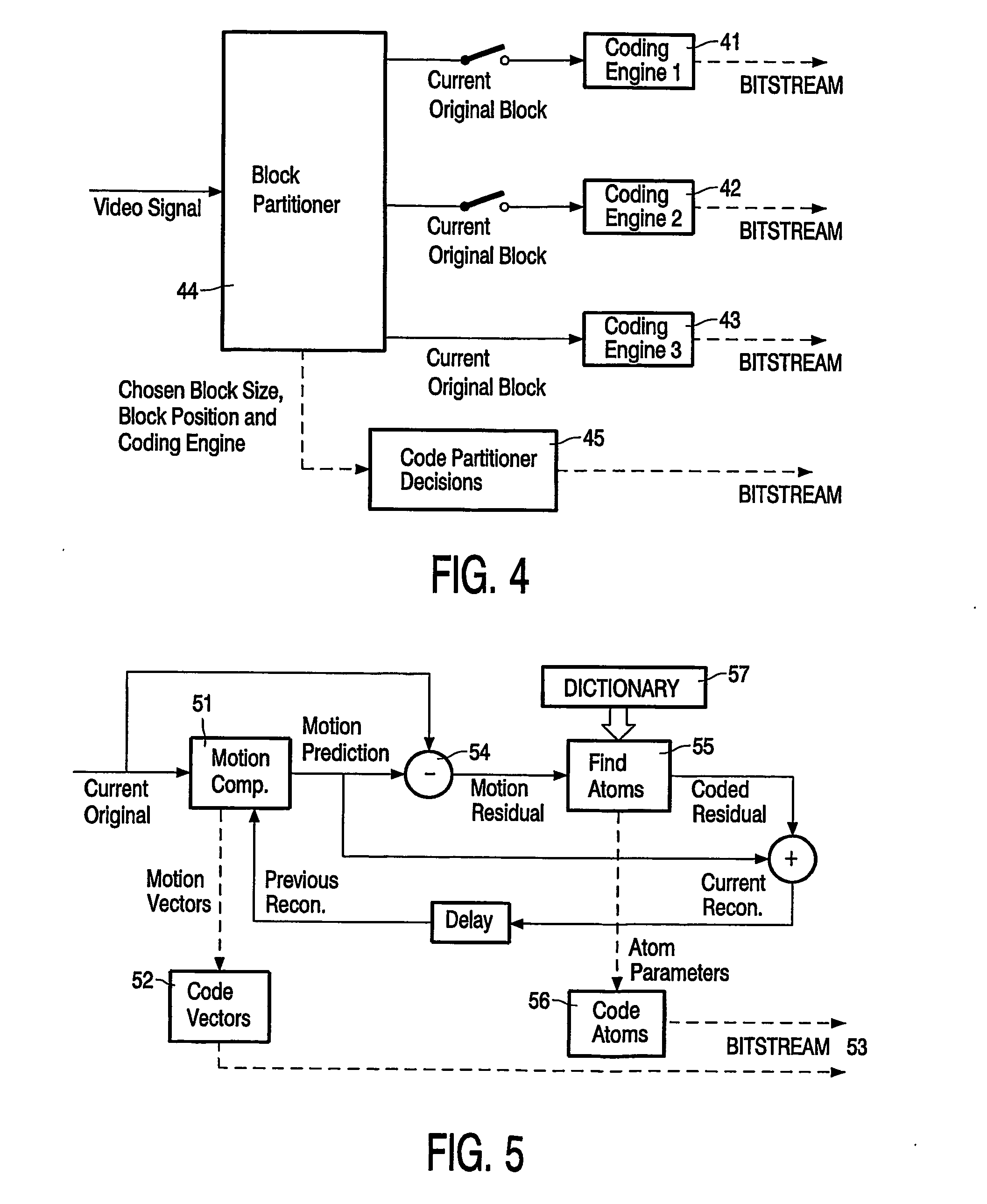Video encoding and decoding methods and corresponding devices
a video and encoding technology, applied in the field of video compression, can solve the problems of blocking artifacts, inability to deliver an artefact-free sequence, and visible prediction grids
- Summary
- Abstract
- Description
- Claims
- Application Information
AI Technical Summary
Problems solved by technology
Method used
Image
Examples
Embodiment Construction
[0039] A simplified block diagram of a video encoding device implementing a matching pursuit algorithm has been described above in relation with FIG. 5. This encoding device carries out a method of coding an input bitstream that comprises the same steps as described above: [0040] the original frames of the input sequence are motion-compensated; [0041] residual signals are generated by difference between the current frame and the associated motion-compensated prediction; [0042] each of said residual signals is compared with a dictionary of functions consisting of a collection of 2D separable Gabor functions; [0043] once the atom parameters are found, they can be coded (together with the motion vectors previously determined), the coded signals thus obtained forming the bitstream sent to the decoder.
[0044] The technical solution now proposed according to the invention consists in having separate dictionaries, one for each block shape respectively (4×4, 4×8, 8×4, 8×8, 8×16, 16×8, 16×16...
PUM
 Login to View More
Login to View More Abstract
Description
Claims
Application Information
 Login to View More
Login to View More - R&D
- Intellectual Property
- Life Sciences
- Materials
- Tech Scout
- Unparalleled Data Quality
- Higher Quality Content
- 60% Fewer Hallucinations
Browse by: Latest US Patents, China's latest patents, Technical Efficacy Thesaurus, Application Domain, Technology Topic, Popular Technical Reports.
© 2025 PatSnap. All rights reserved.Legal|Privacy policy|Modern Slavery Act Transparency Statement|Sitemap|About US| Contact US: help@patsnap.com



